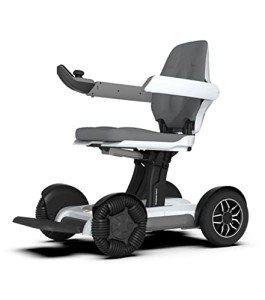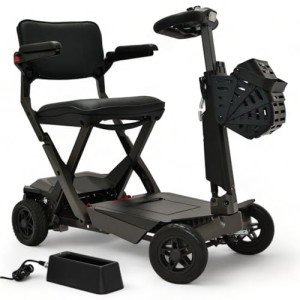Navigating the Journey: A Comprehensive Guide to Buying a Mobility Scooter
In a period where mobility is critical, the importance of ease of access tools like mobility scooters can not be overemphasized. These devices provide independence and flexibility to people who may otherwise find it challenging to walk around. Whether you're a senior aiming to preserve an active lifestyle, somebody recuperating from an injury, or an individual with a disability, a mobility scooter can be a game-changer. This guide aims to provide a thorough summary of the aspects to think about when buying a mobility scooter, guaranteeing you make a notified and confident decision.
Understanding Mobility Scooters
A mobility scooter is a battery-powered device designed to help individuals with mobility concerns. They can be found in different types, each customized to different needs and environments. The primary components of a mobility scooter include the frame, motor, battery, and controls. They can be categorized into three primary types:
- Travel Scooters: Compact and light-weight, these scooters are developed for simple transportation and storage. They frequently include features like disassemblable parts, making them ideal for travel.
- Front-Wheel Drive Scooters: These are usually more budget friendly and appropriate for indoor and smooth outside surfaces. They are perfect for brief ranges and casual use.
- Rear-Wheel Drive Scooters: Built for durability and power, these scooters are perfect for outside usage and longer distances. They use better stability and can manage rougher surface.
Key Factors to Consider
When buying a mobility scooter, a number of elements ought to be taken into consideration to ensure it fulfills your specific requirements and preferences.
Meant Use
- Indoor vs. Outdoor: Determine where you will mostly use the scooter. Indoor scooters are usually lighter and more maneuverable, while outside scooters are developed for resilience and can deal with rougher surfaces.
- Range: Consider the maximum distance you require to take a trip. Some scooters have a series of just a few miles, while others can increase to 30 miles or more on a single charge.
Size and Weight
- Frame Size: Ensure the scooter is the right size for you. Adjustable seats and tillers (steering columns) can improve convenience and fit.
- Weight Capacity: Check the weight capacity of the scooter to guarantee it can safely support your weight.
Battery and Charging
- Battery Type: Most scooters utilize lead-acid or lithium-ion batteries. Lithium-ion batteries are lighter and have a longer lifespan however are more pricey.
- Charging Time: Consider the length of time it requires to charge the battery and whether you have access to a convenient charging location.
Functions and Accessories
- Seating: Look for a comfy, adjustable seat with great back assistance.
- Storage: Some scooters feature baskets or storage compartments for carrying individual products.
- Security Features: Features like headlights, taillights, and brakes can boost safety, particularly for outdoor use.
Budget
- Expense: Mobility scooters can vary from a couple of hundred to a number of thousand dollars. Set a budget plan and try to find models that offer the best worth for your cash.
- Maintenance: Consider the ongoing costs of upkeep, such as battery replacement and routine maintenance.
Steps to Buying a Mobility Scooter
Research and Compare
- Online Reviews: Read evaluations from other users to get an idea of the scooter's efficiency and reliability.
- Producer Websites: Visit the sites of respectable producers to find out more about their products and customer support.
Test Drive
- Local Dealerships: Visit regional dealerships to check drive different designs. This will help you get a feel for the scooter's handling and convenience.
- Ask Questions: Don't think twice to ask the salesperson about the scooter's features, maintenance requirements, and warranty.
Seek Advice From a Healthcare Professional
- Medical Advice: If you have specific medical conditions, consult a health care professional to guarantee the scooter meets your requirements.
Consider Insurance and Assistance
- Insurance: Check if your medical insurance covers the cost of a mobility scooter.
- Government Assistance: Some federal government programs provide financial assistance for mobility aids.
Make the Purchase

- Guarantee: Ensure the scooter features a thorough guarantee that covers both parts and labor.
- Shipment and Setup: Arrange for delivery and setup if the scooter is not portable.
Frequently asked questions
Q: What is the difference between a mobility scooter and a power wheelchair?
- A: A mobility scooter is typically used for outside and longer distances, while a power wheelchair is more suitable for indoor use and has a smaller turning radius. Mobility scooters are normally easier to run and have a more open style, whereas power wheelchairs provide more assistance and are better for users with minimal upper body strength.
Q: How do I select the best size mobility scooter?
- A: Measure your height and weight to guarantee the scooter can accommodate you easily. Search for designs with adjustable seats and tillers to tailor the fit. Test driving the scooter can also help you figure out if it is the right size.
Q: Can I utilize a mobility scooter on mass transit?
- A: Many public transportation systems, including buses and trains, are geared up to accommodate mobility scooters. Nevertheless, it's a good idea to inspect the specific guidelines and requirements of your regional transit authority.
Q: How frequently do I require to charge the battery?

- A: The frequency of charging depends on the battery type and the range you take a trip. The majority of scooters can go 10-30 miles on a single charge. It's a good practice to charge the battery after each usage to keep its life-span.
Q: What maintenance is required for a mobility scooter?
- A: Regular maintenance includes checking the battery level, tire pressure, and brake function. It's also important to clean up the scooter and keep it complimentary from particles. Follow the producer's guidelines for more comprehensive upkeep directions.
Buying a mobility scooter is a significant financial investment that can greatly enhance your quality of life. By thinking about the aspects laid out in this guide, you can discover a scooter that satisfies your needs and offers the liberty and self-reliance you deserve. Whether you're checking out the outdoors or browsing your day-to-day routine, a well-chosen mobility scooter can be a trustworthy buddy on your journey.
Additional Resources
- Mobility Scooter Reviews: Websites like Consumer Reports and MobilityScooterExpert provide in-depth reviews and contrasts of different designs.
- Local Support Groups: Join regional support groups for people with mobility issues to share experiences and get suggestions.
- Government Programs: Check with local federal government companies for programs that offer financial help for mobility aids.
By making the effort to research and make a notified choice, you can enjoy the many benefits of a mobility scooter and continue to live an active and fulfilling life.


